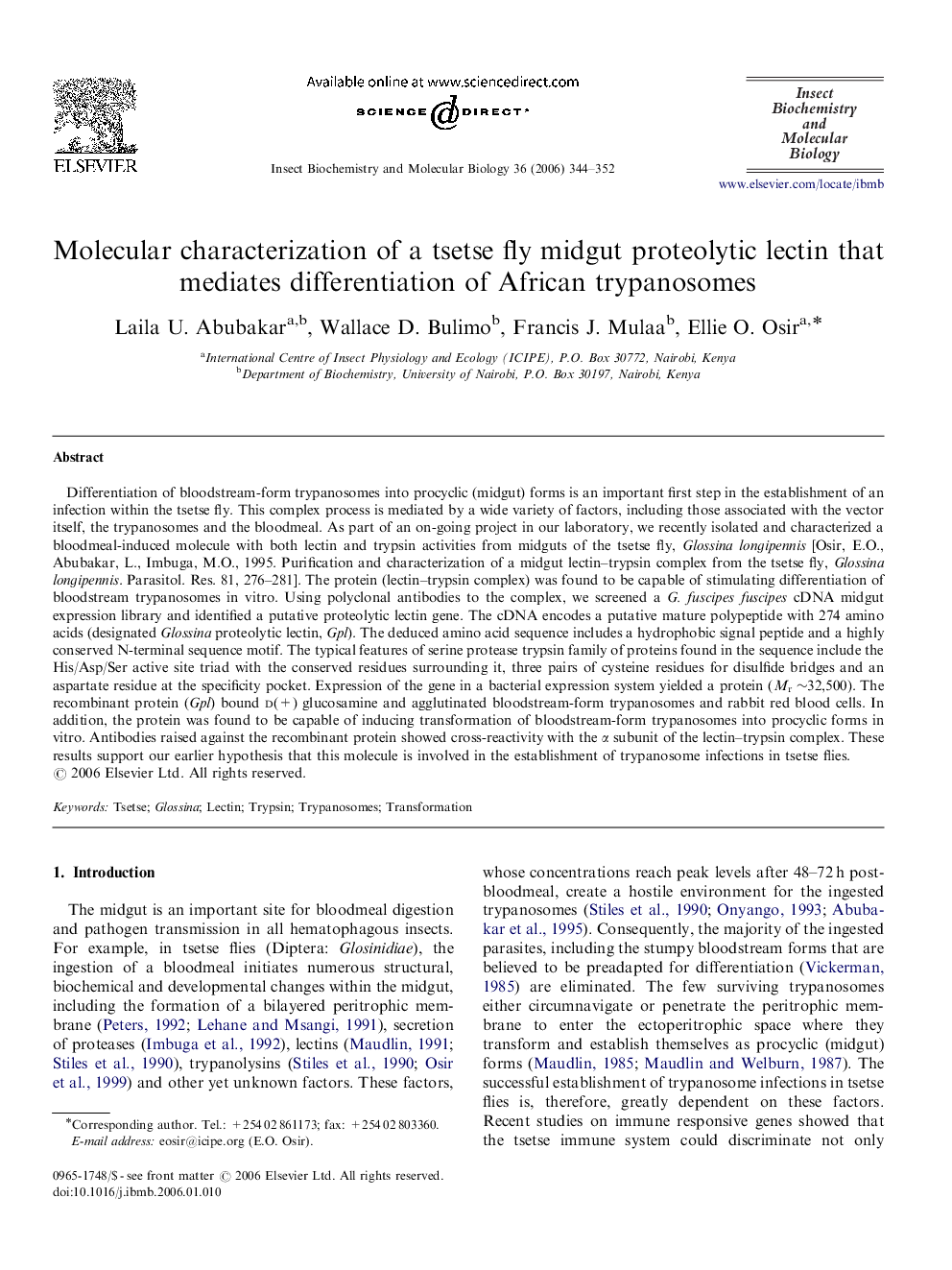| Article ID | Journal | Published Year | Pages | File Type |
|---|---|---|---|---|
| 1983200 | Insect Biochemistry and Molecular Biology | 2006 | 9 Pages |
Differentiation of bloodstream-form trypanosomes into procyclic (midgut) forms is an important first step in the establishment of an infection within the tsetse fly. This complex process is mediated by a wide variety of factors, including those associated with the vector itself, the trypanosomes and the bloodmeal. As part of an on-going project in our laboratory, we recently isolated and characterized a bloodmeal-induced molecule with both lectin and trypsin activities from midguts of the tsetse fly, Glossina longipennis [Osir, E.O., Abubakar, L., Imbuga, M.O., 1995. Purification and characterization of a midgut lectin–trypsin complex from the tsetse fly, Glossina longipennis. Parasitol. Res. 81, 276–281]. The protein (lectin–trypsin complex) was found to be capable of stimulating differentiation of bloodstream trypanosomes in vitro. Using polyclonal antibodies to the complex, we screened a G. fuscipes fuscipes cDNA midgut expression library and identified a putative proteolytic lectin gene. The cDNA encodes a putative mature polypeptide with 274 amino acids (designated Glossina proteolytic lectin, Gpl). The deduced amino acid sequence includes a hydrophobic signal peptide and a highly conserved N-terminal sequence motif. The typical features of serine protease trypsin family of proteins found in the sequence include the His/Asp/Ser active site triad with the conserved residues surrounding it, three pairs of cysteine residues for disulfide bridges and an aspartate residue at the specificity pocket. Expression of the gene in a bacterial expression system yielded a protein (Mr ∼32,500). The recombinant protein (Gpl) bound d(+) glucosamine and agglutinated bloodstream-form trypanosomes and rabbit red blood cells. In addition, the protein was found to be capable of inducing transformation of bloodstream-form trypanosomes into procyclic forms in vitro. Antibodies raised against the recombinant protein showed cross-reactivity with the α subunit of the lectin–trypsin complex. These results support our earlier hypothesis that this molecule is involved in the establishment of trypanosome infections in tsetse flies.
